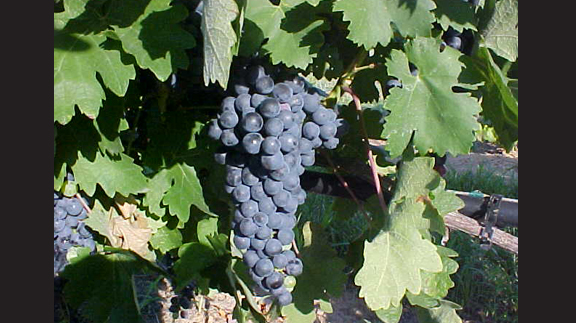Farm & Ranch
New publication explains ‘grape expectations’ for Texas vineyard owners

By: Kathleen Phillips
Writer: Kathleen Phillips, 979-845-2872, [email protected]
Contact: Dr. Jim Kamas, 830-990-4046, [email protected]
FREDERICKSBURG — Before planting grapes in Texas, every potential grower needs to answer one essential question, according to Jim Kamas: “Why do you want to plant a vineyard?”
Kamas, Texas A&M AgriLife Extension Service fruit specialist in Fredericksburg, begins with that question in his new book, “Growing Grapes in Texas: From the Commercial Vineyard to the Backyard Vine.”
This manual on grape growing in Texas was published by the Texas A&M University Press and is available at http://bit.ly/texasgrapebook for $25.
“After encountering hundreds of people interested in planting a vineyard over the past 35 years, the list of questions and misconceptions seemed to repeat themselves,” Kamas said. “So, I decided it was worth my time to sit down and respond to the multitude of choices and decisions every prospective grape grower faces. Most people do not comprehend the extent to which grape growing is a risky business, and while it is not ‘rocket science,’ it is indeed science.”
Kamas describes the different grape growing regions in Texas, while providing information for both a commercial venture and an at-home plot to help growers achieve the highest yields.
The 264-page book includes more than 160 color photos as Kamas discusses site choice and design, rootstock and fruiting varieties, pruning and training strategies, canopy and floor management, disease and pest control, water needs and nutrition requirements for grapes.
For those interested in commercial aspects of grape production, Kamas also provides information about vineyard-winery relations.
“The book seeks to relay to the reader not just instruction on how to establish a vineyard but to help the reader gain understanding of the scientific reasons behind why decisions are made,” Kamas said.
Grape and wine lovers from all parts of the country will find this book a valuable resource, according to the publisher.
-30-
Farm & Ranch
Ag Elsewhere: Wyoming

By Tressa Lawrence
Babies are tucked away in every nook and cranny. Many ranchers across Wyoming have baby animals popping up all over this time of year.
Farm & Ranch
Ag Elsewhere: Montana

By Lindsey Monk
Another load of grain in to keep feeding the calves until the green grass can really start popping.
Farm & Ranch
Meanwhile, Back at the Ranch….

By Rayford Pullen | [email protected]
Spring has sprung and hopefully the rains will continue where our country will heal from the previous droughts and our grasses will thrive. We are especially hopeful for the Panhandle of Texas where our neighbors and friends have been dealt a deadly blow to homes, ranges, livestock, and people. Keep them in your prayers as they will not be able to return to normal for many years if at all. Having lost their ability to benefit from this great cattle market is a double whammy for all of them.
Now is the time of year when we need to take care of business as it relates to our new calves that have been hitting the ground this spring. First and foremost is vaccinating for Blackleg followed by deworming with a white wormer and the IBR complex. Blackleg is a soil-born disease and with pastures extremely short this spring our calves have been grazing the green grass as soon as it shows itself, making them even more vulnerable to picking contaminates from the soil.
To read more, pick up a copy of the April issue of NTFR magazine. To subscribe by mail, call 940-872-5922.
-

 Country Lifestyles1 year ago
Country Lifestyles1 year agoScott & Stacey Schumacher: A Growth Mindset
-

 Equine7 months ago
Equine7 months agoThe Will to Win
-

 Country Lifestyles7 years ago
Country Lifestyles7 years agoStyle Your Profile – What your style cowboy hat says about you and new trends in 2017
-

 Country Lifestyles4 years ago
Country Lifestyles4 years agoAmber Crawford, Breakaway Roper
-

 HOME7 years ago
HOME7 years agoGrazing North Texas – Wilman Lovegrass
-

 Country Lifestyles7 years ago
Country Lifestyles7 years agoDecember 2016 Profile, Rusty Riddle – The Riddle Way
-

 Country Lifestyles8 years ago
Country Lifestyles8 years agoJune 2016 Profile – The man behind the mic: Bob Tallman
-

 Country Lifestyles8 years ago
Country Lifestyles8 years agoCowboy Culture with Clay Reid – Being a Man






